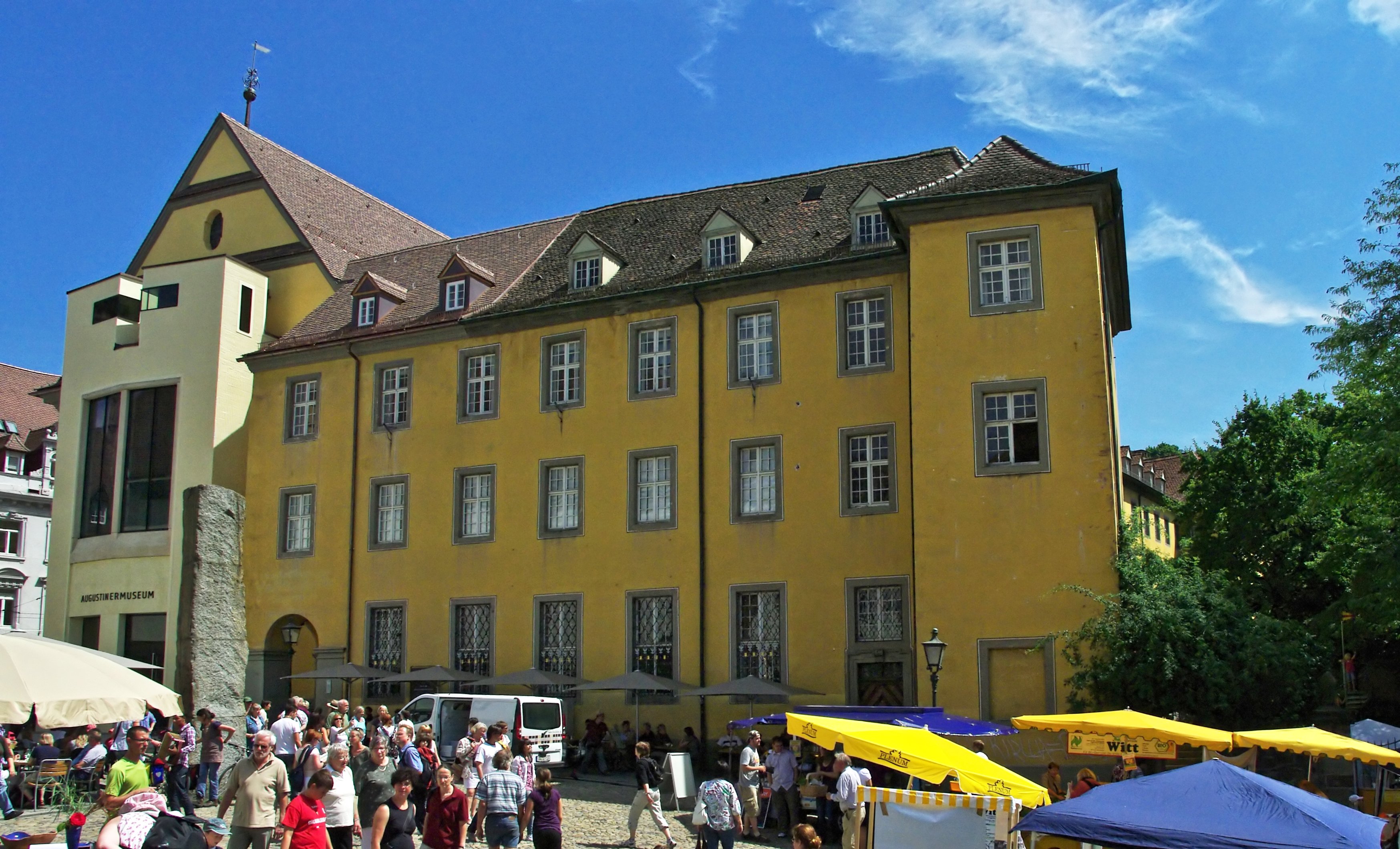|
Diocesan Museum
A diocesan museum is a museum for an ecclesiastical diocese, a geographically-based division of the Christian Church. Austria: * Diocesan Museum, Graz, Styria * Gurk Treasury, Carinthia * Diocesan Museum, Linz, Upper Austria * Cathedral Museum Salzburg, Salzburg state (Diocesan and Cathedral Chapter collections) * Diocesan Museum, St. Pölten, Lower Austria * Cathedral and Diocesan Museum, Vienna * ''Evangelical Diocesan Museum, Burgenland'' in the Evangelical Prayer House in the Mönchhof Village Museum * Evangelical Diocesan Museum, Fresach in Fresach, Carinthia * Evangelical Diocesan Museum, Styria in Murau Germany: * Augustiner Museum Freiburg, Diocesan Museum, for the Archbishopric of Freiburg * Diocesan Museum, Bamberg * Kolumba, Archepiscopal Diocesan Museum, Cologne * Diocesan Museum, Eichstätt * Domberg Museum, Freising * Cathedral Museum, Fulda * Cathedral Museum, Hildesheim * Cathedral and Diocesan Museum, Mainz * Diocesan Museum, Osnabrück * Archep ... [...More Info...] [...Related Items...] OR: [Wikipedia] [Google] [Baidu] |
Augustinermuseum Skulpturenhalle
The Augustiner Museum is a museum in Freiburg im Breisgau, Germany located in the former Augustinian Monastery building. It is undergoing an extensive renovation and expansion, the first phase of which ended in 2010.Augustinermuseum in Freiburg: Eine schöne Maschine Volker Bauermeister, '''', 24 March 2010. Retrieved 24 September 2010. The museum The museum is located in a former Augustinian monastery which was rebuilt between 1914 and 1923. The[...More Info...] [...Related Items...] OR: [Wikipedia] [Google] [Baidu] |
Kolumba
The Kolumba (previously Diözesanmuseum, "Diocesan Museum") is an art museum in Cologne, Germany. It is located on the site of the former St. Kolumba church, and run by the Archdiocese of Cologne. It is one of the oldest museums in the city, alongside the Wallraf-Richartz Museum.Kolumba, Köln kulturkenner.de. History The museum was founded by the Society for Christian Art in 1853, and taken over by the Archdiocese of Cologne in 1989.Kolumba, Art Museum of the Archdiocese of CologneBettina Carrington, '' |
Diocesan Museum (Cortona)
The Diocesan Museum in Cortona is an art museum in Cortona, Tuscany, Italy.''Museum of the Diocese of Cortona: a guide to its history and art'' by Edoardo Mori (1998) pages 2–4 Located on the former site of the local Church of Gesù, it houses works of art by artists such as Fra Angelico, Pietro Lorenzetti, Bartolomeo della Gatta, Luca Signorelli and Sassetta. The oldest item in the museum is a marble Roman sarcophagus (2nd century AD), depicting depicts the battle of Dionysus. A room in the museum is specifically dedicated to the works of Luca Signorelli and his workshop, and emphasizes the bond between Signorelli and his hometown, and correspond to the artist's last years of work, from 1512 to 1523, the year of his death. Ten of the works bear the personal signature of Signorelli, the others are assumed to be from his workshop. The large tempera on panel depiction of the ''Lamentation of Christ'', which used to be in the church of S. Margaret of Cortona, was called " ... [...More Info...] [...Related Items...] OR: [Wikipedia] [Google] [Baidu] |
Brixen
Brixen (, ; it, Bressanone ; lld, Porsenù or ) is a town in South Tyrol, northern Italy, located about north of Bolzano. Geography First mentioned in 901, Brixen is the third largest city and oldest town in the province, and the artistic and cultural capital of the valley. It is located at the confluence of the Eisack and Rienz rivers, north of Bolzano and south of the Brenner Pass, on the Italy-Austrian border. It is flanked on the eastern side by the Plose and Telegraph (Monte Telegrafo) mountains (2,504 m) and on the western side by the Königsanger (Monte Pascolo) (2,436 m) mountain. Brixen is especially known as a major skiing resort (the Plose). Other activities include hydroelectric power, orchards, and vineyards. ''Frazioni'' ''Frazioni'' / incorporated villages: Afers (Eores), Albeins (Albes), Elvas, Gereuth, Karnol, Klerant (Cleran), Kranebitt (Costa d'Elvas), Mahr (La Mara), Mairdorf, Mellaun (Meluno), Milland, Pairdorf (Perara), Pinzagen (Pinzago), Plabach, Rutz ... [...More Info...] [...Related Items...] OR: [Wikipedia] [Google] [Baidu] |
Rottenburg Am Neckar
Rottenburg am Neckar (; until 10 July 1964 only ''Rottenburg''; Swabian: ''Raodaburg'') is a medium-sized town in the administrative district (''Landkreis'') of Tübingen in Baden-Württemberg, Germany. It lies about 50 kilometres (31 miles) southwest of the provincial capital Stuttgart and about 12 km (7 mi) southwest of the district town Tübingen. Rottenburg is the second-largest town of the district after Tübingen and makes up a secondary centre for the surrounding community. Since 1 May 1972, Rottenburg am Neckar has been a district town (''Große Kreisstadt''). Rottenburg agreed to an administrative collective with the municipalities of Hirrlingen, Neustetten and Starzach. Rottenburg is the seat of a Roman Catholic bishop, being the official centre of the diocese of Rottenburg-Stuttgart. Moreover, it has a college of church music and a university of applied sciences (German ''Fachhochschule''), specialising in forestry. Geography Rottenburg is divided int ... [...More Info...] [...Related Items...] OR: [Wikipedia] [Google] [Baidu] |
Regensburg
Regensburg or is a city in eastern Bavaria, at the confluence of the Danube, Naab and Regen rivers. It is capital of the Upper Palatinate subregion of the state in the south of Germany. With more than 150,000 inhabitants, Regensburg is the fourth-largest city in the State of Bavaria after Munich, Nuremberg and Augsburg. From its foundation as an imperial Roman river fort, the city has been the political, economic and cultural centre of the surrounding region; it is still known in the Romance languages by a cognate of its Latin name of "Ratisbona" (the version "Ratisbon" was long current in English). Later, under the rule of the Holy Roman Empire, it housed the Perpetual Diet of Regensburg. The medieval centre of the city was made a UNESCO World Heritage Site in 2006 because of its well-preserved architecture and the city's historical importance for assemblies during the Holy Roman Empire. In 2014, Regensburg was among the top sights and travel attractions in Germany. Histor ... [...More Info...] [...Related Items...] OR: [Wikipedia] [Google] [Baidu] |




